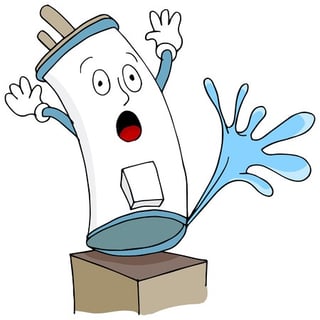What do you do if your water heater is leaking?
The first thing to do is find out where the water is actually coming from. Like many other problems, some are easier, and cheaper, to fix than others.
The first place to start is at the top with the water supply lines. You may be seeing water on the floor,  but that doesn't mean that it came from the bottom of the water heater. Look at where the water lines come into the room and follow them all the way down to the top of the tank. If you find water, try to trace the source.
but that doesn't mean that it came from the bottom of the water heater. Look at where the water lines come into the room and follow them all the way down to the top of the tank. If you find water, try to trace the source.
Flexible water supply tubes have been known to fail long before the water heater itself is ready to retire. If there is insulation, be sure to remove it to see if it is wet underneath. To replace the flex lines turn off the water supply and the water heater itself. If you feel like the job is too big for you, call a licensed plumber.
If you have changed the water supply tubes and you are still seeing leakage, the next items to check are the water heater's nipples where the water is taken in to be heated. Water heater nipples are difficult to remove, but it can be done. Just be careful not to damage the water heater in the process. Again, make sure the water supply is turned off and the water heater is off before beginning the process. but that doesn't mean that it came from the bottom of the water heater. Look at where the water lines come into the room and follow them all the way down to the top of the tank. If you find water, try to trace the source.
but that doesn't mean that it came from the bottom of the water heater. Look at where the water lines come into the room and follow them all the way down to the top of the tank. If you find water, try to trace the source. Flexible water supply tubes have been known to fail long before the water heater itself is ready to retire. If there is insulation, be sure to remove it to see if it is wet underneath. To replace the flex lines turn off the water supply and the water heater itself. If you feel like the job is too big for you, call a licensed plumber.

There is also the option of calling a professional for an inspection and estimate. Knowing exactly what the problem is and how much it will cost to fix it is usually worth the cost of the service call.
You may also want to look at our Plumbing Page.

